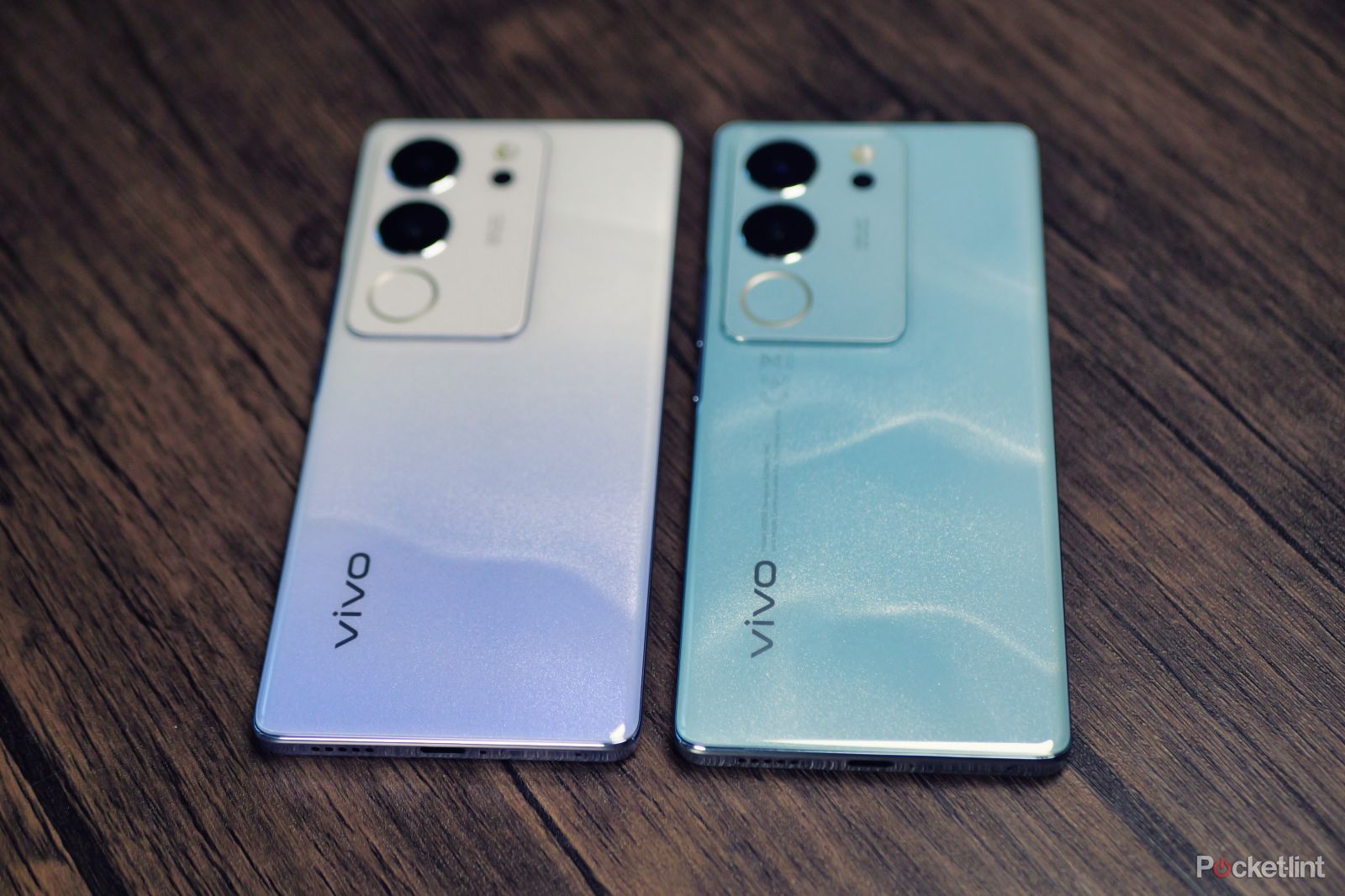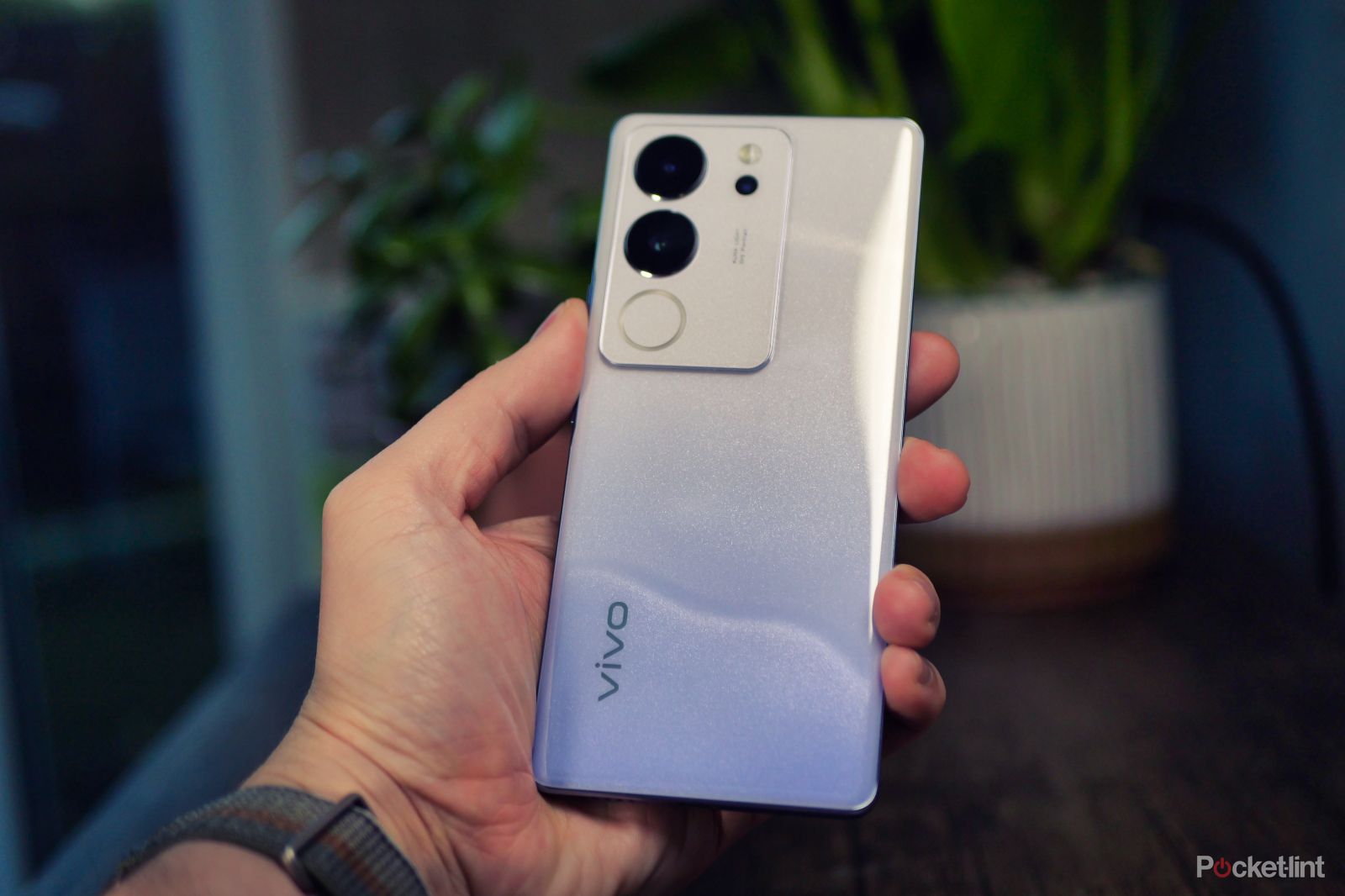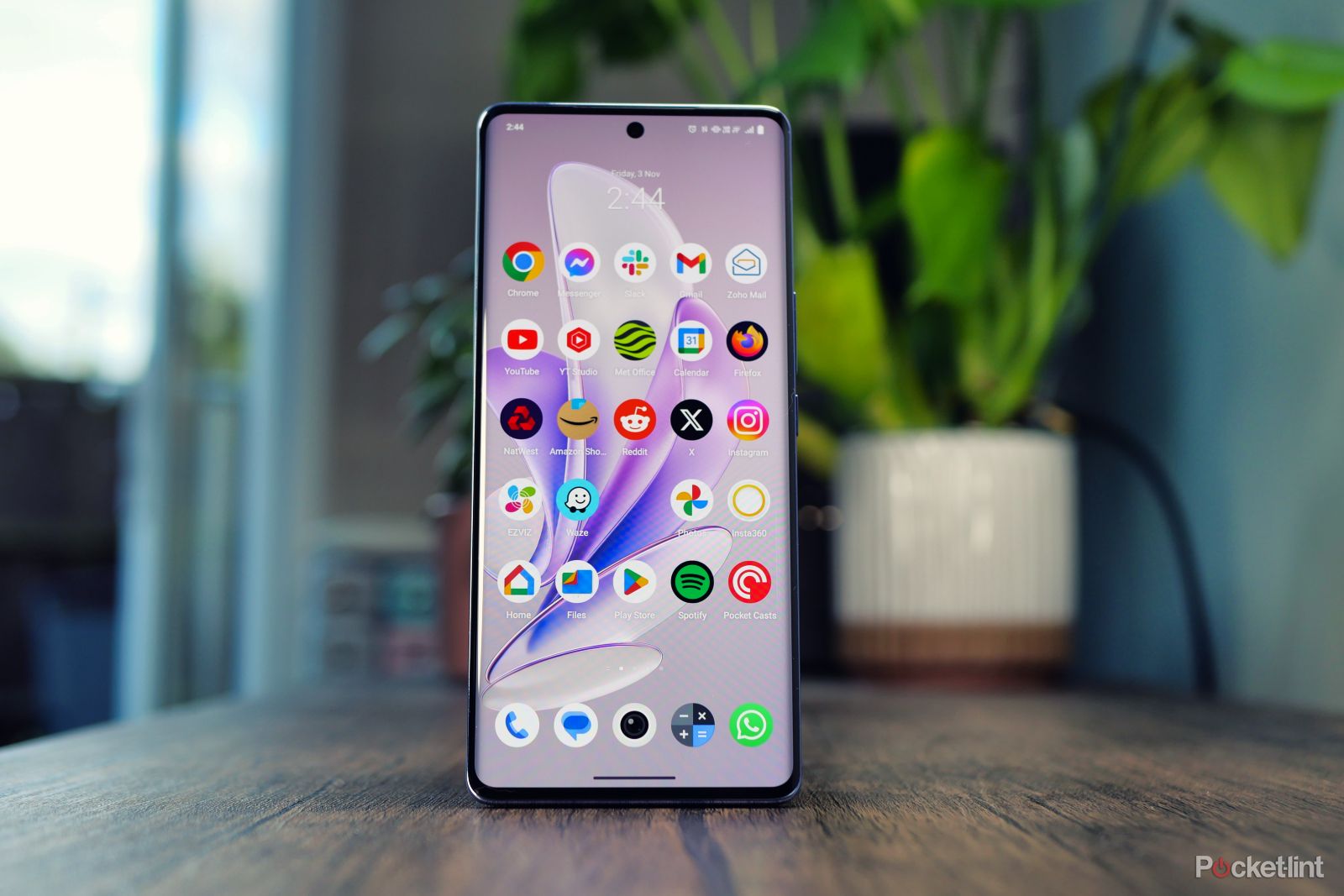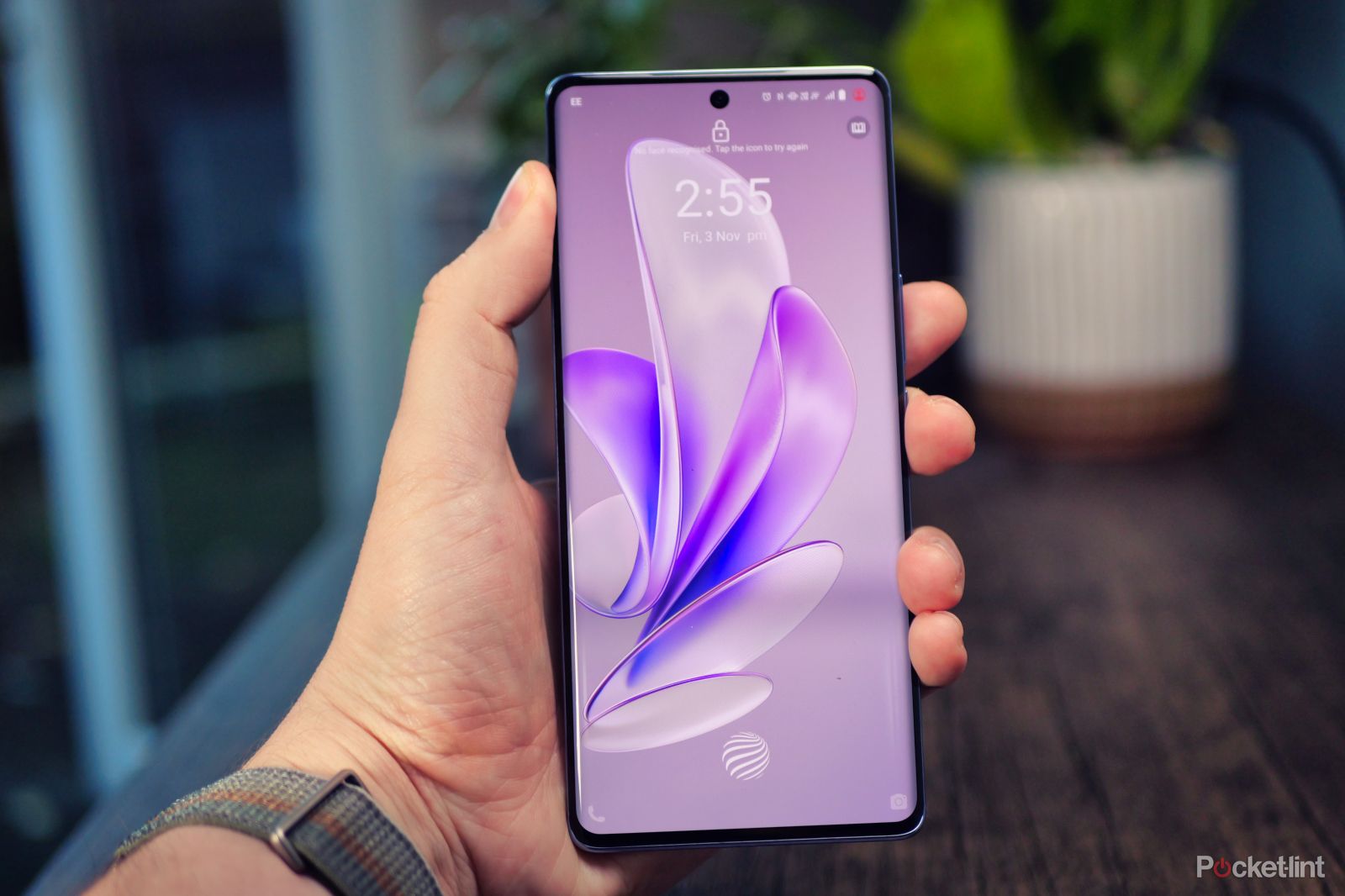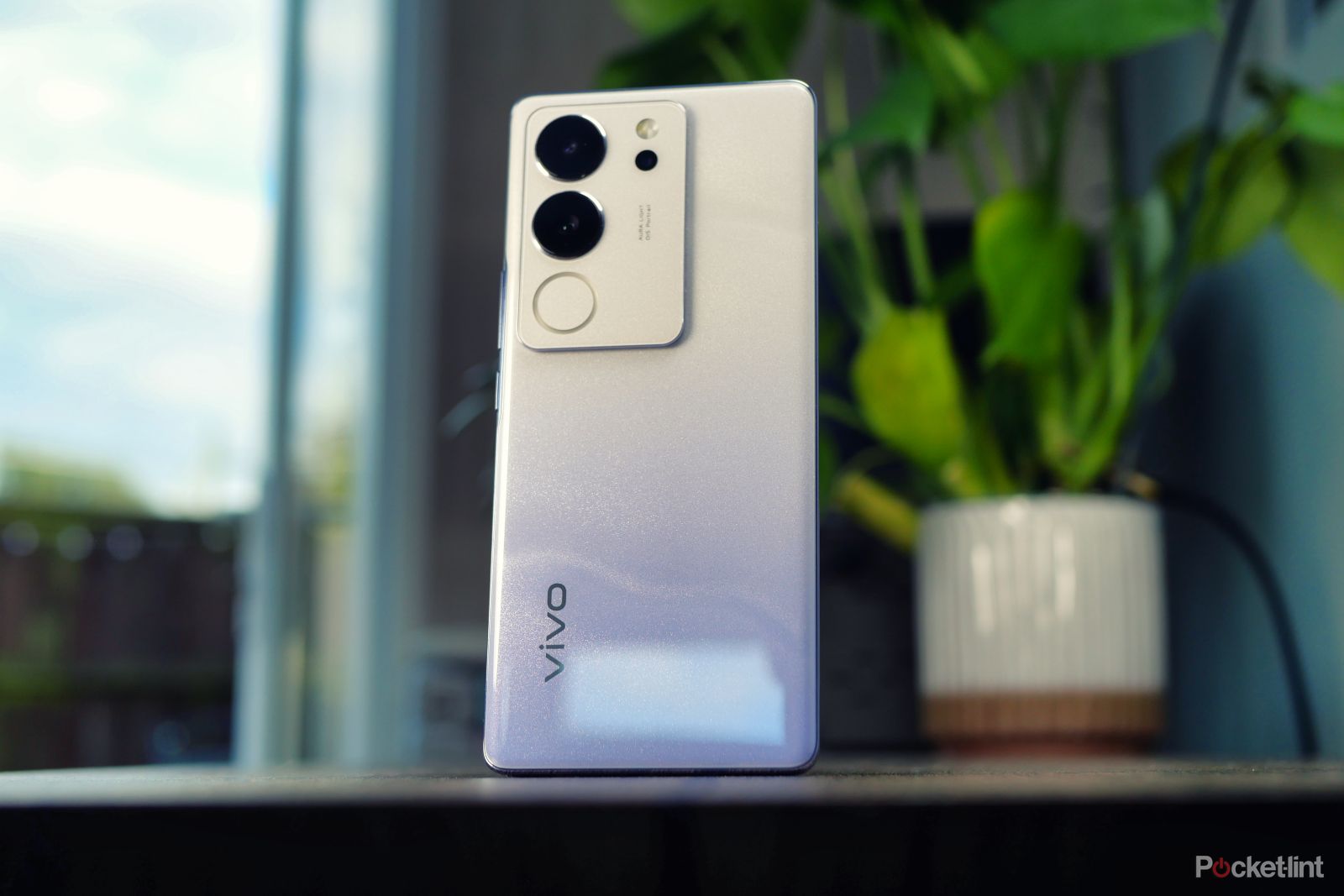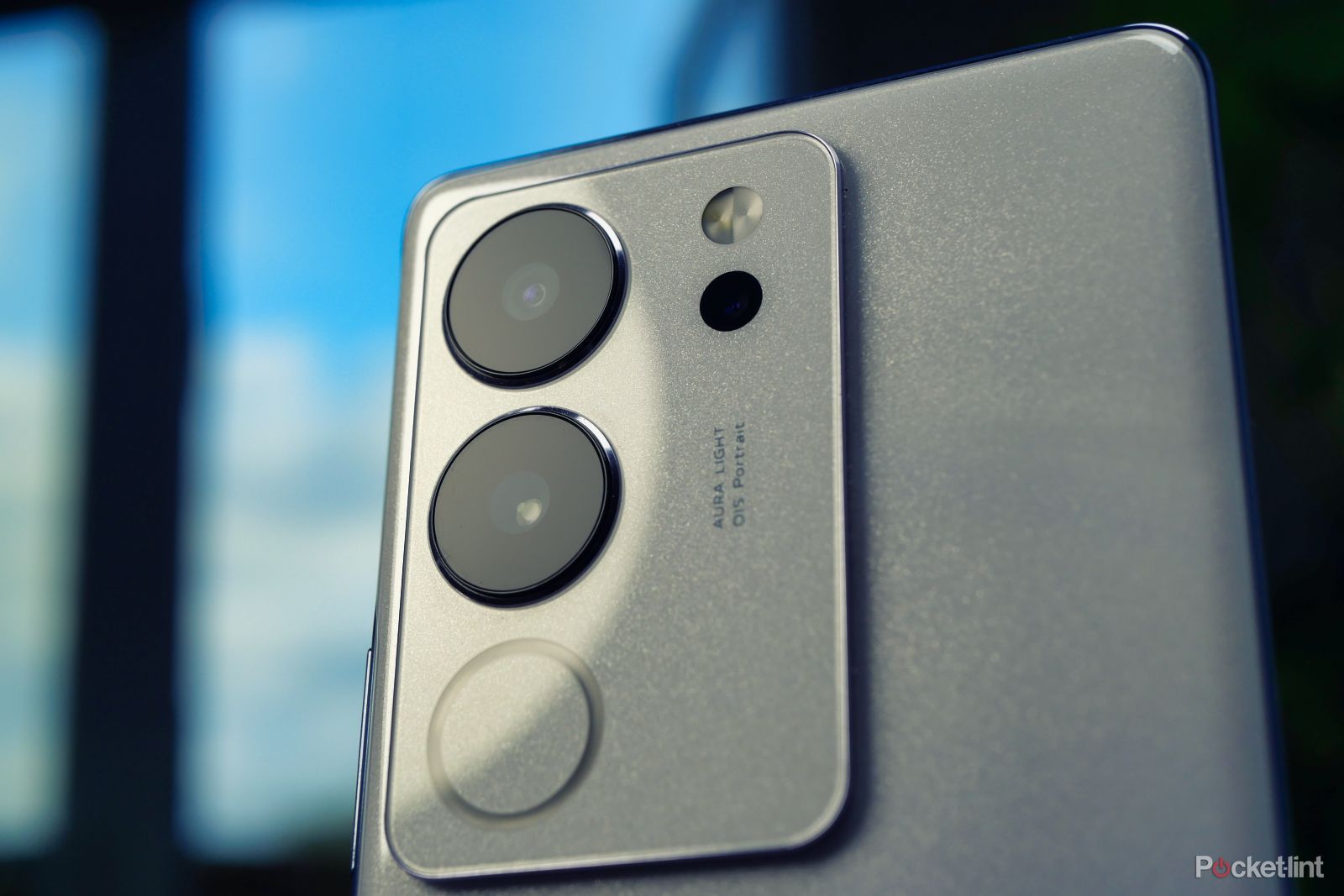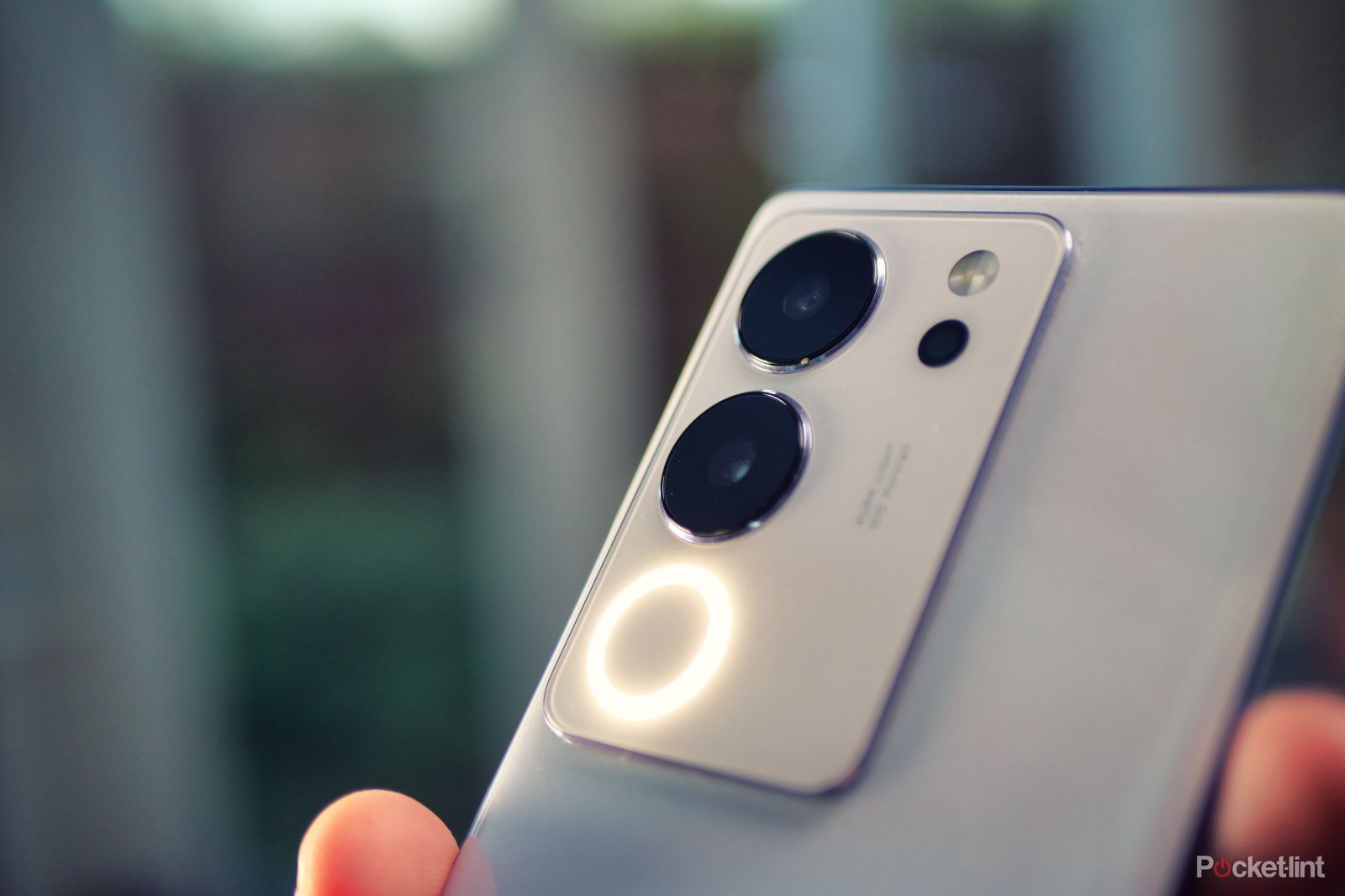It was only back in March that I took the Vivo V27 and V27 Pro for a spin, but now I’m back with the Vivo V29. What happened to the V28, you may be wondering? Vivo skips a number in the V series, for some reason, so the V25 preceded the V27, and presumably, we’ll be seeing a V31 before too long, as well.
Naming confusion aside, the V29 is a phone that bears plenty of resemblance to its predecessor, and the signature impactful colourways and halo-shaped LED flash are present on the newer model, too.
With a similar look, and such a short space of time between iterations, I was initially concerned that not much had changed but thankfully, there’s more going on with the V29 than first meets the eye. There’s an impressive new display, an innovative new lighting tool, and, as we’ve come to expect from the V-series, camera performance that outclasses its price point. Let’s take a closer look.
Vivo
vivo V29
The Vivo V29 is one of the best selfie snappers on the market today. These photographic abilities extend to the rear camera, too, and are aided by a novel bi-colour fill-light solution. The main problem is likely to be getting your hands on one, depending on where you live.
- One of the best selfie cameras around
- Brilliant main camera
- Bi-colour Aura light
- Good battery and speedy charging
- Unique colour finishes
- Older mid-range processor
- Not available in all regions
- 8MP ultra-wide is less impressive
Price, specs and availability
The Vivo V29 was released in August 2023 and is available to buy now in more than 39 markets including India, Indonesia, Thailand, Malaysia, Philippines, Singapore, Turkey, Mexico and selected European countries.
It is not currently sold in the UK or US through official channels, though imports are widely available. The Vivo V29 starts at around €450 / $480, though the price will differ between regions.
vivo V29
- SoC
- Snapdragon 778G
- Display
- 2800×1260 120Hz AMOLED
- RAM
- 8GB / 12GB
- Storage
- 128GB / 256GB / 512GB
- Battery
- 4600 mAh
- Ports
- USB-C only
- Operating System
- FunTouch OS 13
- Front camera
- 50MP with autofocus
- Rear camera
- 50MP main + 8MP ultra-wide + 2MP Monochrome
- Dimensions
- 164.18×74.37×7.46 mm
- Weight
- 186g
- Charge speed
- 80W wired
- IP Rating
- IP68
Design
The Vivo V29, like its predecessors, adopts a pretty significant curve on its display, and also on the rear panel. This means that the phone feels exceptionally slim in your hands and pocket, and it’s fairly lightweight at just 186g, which is impressive, considering it packs a 6.78-inch display. The Vivo X90 Pro is the phone that lives in my pocket on a day-to-day basis, and it’s a chunky handset, so switching to a slimmer and lighter phone like this felt like a bit of a luxury.
The V-series phones often come in unique and eye-catching colourways, some of which have been UV-reactive in previous generations. That trend continues here, with four unique finishes to choose from. I got my hands on the Peak Blue and Starry Purple options, both of which have a glittering sparkle in wavy shapes that shift as the light hits them. Peak Blue is a more uniform colour throughout, whereas the Starry Purple option shifts from a light purple hue to an off-white colour in a single smooth gradient.
Also available are Velvet Red and Noble Black, which both use Vivo’s Fluorite AG glass backs, which we’ve seen on the V27 Pro and iQOO 11. The Velvet Red model is UV-reactive and shifts between purple and red hues, whereas the black model is all black, all the time. All models come with a transparent TPU case included in the box, but if you want to go caseless, I’d definitely opt for the blue or purple variants. Vivo’s AG glass backs feel lovely, but they’re very slippery, and the sparkly options are much grippier. That said, you’ll have to be on board with sparkles, and I can imagine not everyone will be so keen.
Despite coming at an affordable price point, nothing about the Vivo V29 looks or feels cheap. It’s solidly constructed and has a very eye-catching look. It also carries an IP68 rating for dust and water resistance, so it’ll handle the elements without issue. Vivo also says it has been tested in over 60 laboratory scenarios for durability, including drop tests, temperature and humidity tests and more.
Display and speakers
The display has seen a nice upgrade this time around, and it offers a crisp 2800×1260 resolution with a pixel density of 452 PPI. It’s super smooth, thanks to its 120Hz refresh rate and features 2160Hz PWM dimming to reduce eye fatigue.
It’s also extremely bright, supposedly putting out up to 1300 nits at peak. This is one of the brightest panels that I’ve seen on a mid-range device, and it means you’ll have no issues seeing the display on bright sunny days. Streaming content from providers like Netflix also looks great thanks to HDR10+ support.
There’s a good amount of adjustment available for the colour rendering, too. You can select between standard, pro and vivid presets as well as tweak the colour temperature of each. If you’re concerned about eye health, there’s an eye protection mode, as well as SGS certifications for low blue light, low flicker and low smear.
There’s only a single speaker on this model, so you’re not going to get a stereo effect when watching content or playing games with the built-in audio. However, it can still get plenty loud, and it doesn’t sound too tinny. It’s not likely to surprise you, but it’s perfectly adequate for watching YouTube around the house.
Performance and software
The Vivo V29 runs on the Qualcomm Snapdragon 778G, a mid-range chip that’s a couple of years old now, so needless to say, this phone won’t be topping the leaderboards in benchmarks. However, this is the same chip that you’ll find in the Nothing phone (1) and Honor 70, so we already know that it’s plenty capable.
It’s also paired with a healthy amount of RAM, either 8GB or 12GB, and it’s virtually extendable to add up to another 8GB, which means it’s an excellent multitasker. In use, the phone always felt snappy and responsive, apps opened quickly, and I could easily forget that I wasn’t using a flagship device.
It’s really only in gaming that you’ll notice a difference, and you’ll have to load up something graphically intensive, like my current favourite, Honkai Star Rail, to see the effects. I had to switch the graphics preset to ‘low’ to get playable framerates, which is obviously a lot less pretty, but it played well in that mode, and the phone only started to heat up after a good 45 minutes or so – never getting uncomfortably warm.
The Vivo V29 has 4600 mAh battery, and this, combined with its efficient chipset, means that battery life is pretty great. You’ll easily get through a day of fairly heavy use on a charge, and when it’s time to juice back up, it’s done in a flash with the included 80W wall adapter. You can expect to get from flat to full in around 40 minutes or so, a 50 per cent charge will only take about 20 minutes. There’s no wireless charging on this one, but that’s still something quite rare to find on devices at this price point.
The V29 runs FunTouch OS 13, an operating system I’m very familiar with, after using the X90 Pro for so long. It doesn’t stray too far from the stock-android experience, and it adds some extremely in-depth customisation options, which are nice to have, but there are some downsides, too. The main one is that you need to do some fiddling to ensure that you get all of your notifications, as the power-saving measures are quite drastic by default. The other is the amount of bloatware, which is unchanged from the previous V-series devices that I have tested. Thankfully, most of it is easy to remove.
Cameras
With the previous V-series models, it was the camera performance that truly set them apart, and it’s the same case with the V29. The selfie camera appears to carry the same specifications as its predecessor, but that was the best selfie camera I had ever tried, and the same is true of this model.
It has a whopping 50MP resolution on its front-facing camera, and crucially, it has fast and accurate autofocus. This is something that’s still missing on the majority of flagship devices (except for the new Pixel 8 Pro), and it means you can hold your phone up close or at arm’s length, and always look tack-sharp.
The rear camera array is largely unchanged from the Vivo V27, you still get a 50MP main sensor and an 8MP ultra-wide, but there are a couple of less obvious changes. The first is that the useless 2MP macro camera is gone, now replaced by a 2MP depth sensor, presumably to help with portrait mode cut-outs. The other is that the main sensor is now a Samsung GN5, as opposed to a Sony IMX766.
Photos from the main camera look superb, especially in the daylight. Vivo’s colour processing makes for vibrant and natural-looking images with sharp details and plenty of dynamic range. Low-light images are good, too, with the night mode able to bring out the details in even the darkest of scenes. As usual, the portrait mode cut-outs are among the best in the business, too.
The ultra-wide is less impressive. It has a fixed focus, so you won’t be taking any close-ups with it, and the level of detail can’t compare to the main lens. It still comes in useful, from time to time but it’s best used sparingly, as you’ll get much nicer results with the other two cameras.
Test images
The camera system on this phone has another unique trick up its sleeve, too. The large circular flash unit that’s found next to the main lenses is not actually a flash, but a bi-colour continuous light source. This clever light can automatically adjust to match the lighting of your scene, creating a diffused fill light that matches the environment around you. It’s a brilliant idea, and as far as I’m aware, completely unique to this phone.
Of course, with night mode being so good, this clever lighting solution might not get much real-world use, but it’s nice to have the option. In my testing, it did a good job of recognising the ambient light temperature, but you can adjust it manually if you prefer. There’s also a separate, traditional LED flash, so that can be used where required.
Verdict
The Vivo V29 is one of the best phones you can buy for taking selfies, but beyond that, it also provides a brilliant main camera, a lovely display and excellent value for money. If you’re looking for a camera-focused mid-range smartphone in this price range, it’s very easy to recommend, as in many cases, and especially with selfies, its photographic performance will outperform even the likes of the Pixel 7a.
It’s not perfect – the lacklustre ultra-wide, single speaker and mediocre gaming chops are sure to be deal breakers for some. But the main problem lies with its availability, I’m in the UK and a lot of our readers are in the States. The Vivo V29 hasn’t officially released in either region and likely never will. This might mean that getting your hands on one for a good price becomes very difficult.
If you’re in a supported region, though, the Vivo V29 is well worth a look. It’s stylish, shoots great photos and is half the price of most flagship phones.
Trending Products

Cooler Master MasterBox Q300L Micro-ATX Tower with Magnetic Design Dust Filter, Transparent Acrylic Side Panel, Adjustable I/O & Fully Ventilated Airflow, Black (MCB-Q300L-KANN-S00)

ASUS TUF Gaming GT301 ZAKU II Edition ATX mid-Tower Compact case with Tempered Glass Side Panel, Honeycomb Front Panel, 120mm Aura Addressable RGB Fan, Headphone Hanger,360mm Radiator, Gundam Edition

ASUS TUF Gaming GT501 Mid-Tower Computer Case for up to EATX Motherboards with USB 3.0 Front Panel Cases GT501/GRY/WITH Handle

be quiet! Pure Base 500DX ATX Mid Tower PC case | ARGB | 3 Pre-Installed Pure Wings 2 Fans | Tempered Glass Window | Black | BGW37

ASUS ROG Strix Helios GX601 White Edition RGB Mid-Tower Computer Case for ATX/EATX Motherboards with tempered glass, aluminum frame, GPU braces, 420mm radiator support and Aura Sync


